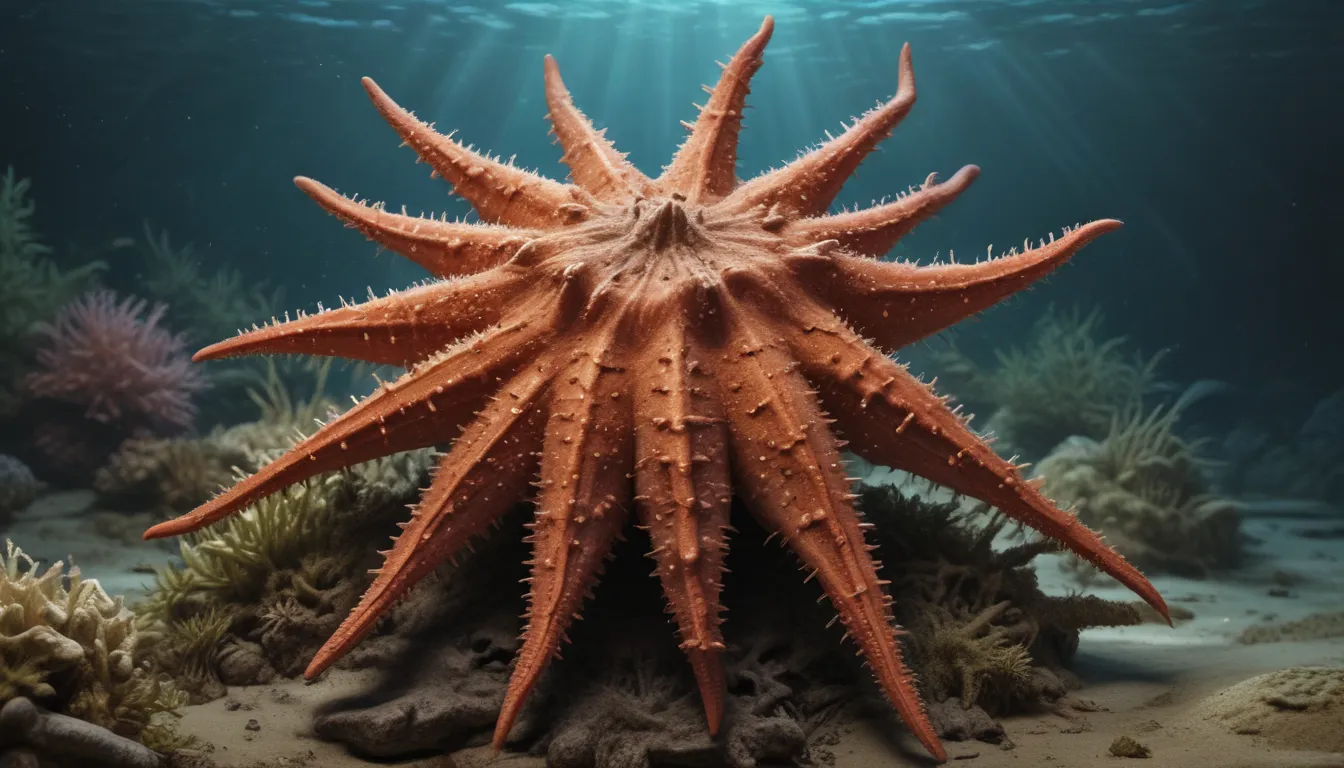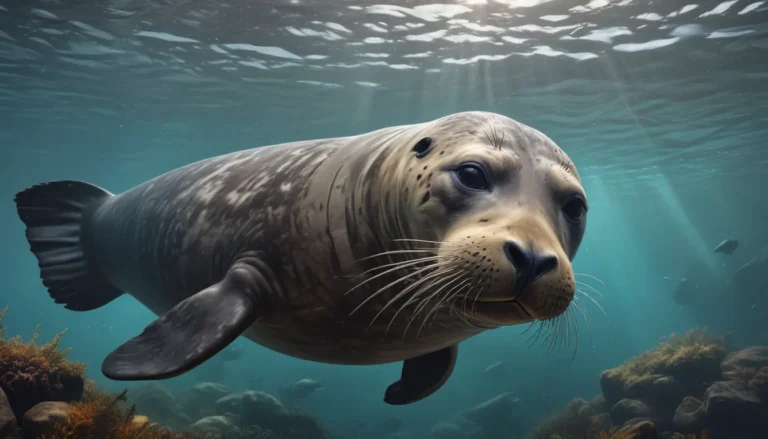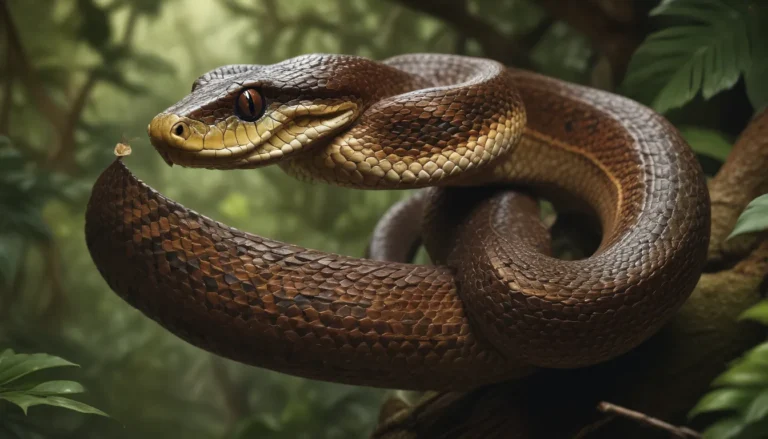The pictures we use in our articles might not show exactly what the words say. We choose these pictures to make you interested in reading more. The pictures work together with the words but don’t take their place. The words still tell you the important facts.
Echinoderms, a captivating group of marine animals belonging to the phylum Echinodermata, encompass approximately 7,000 species distributed across the world's oceans. With their unique characteristics and diverse forms, echinoderms, including sea stars, sea urchins, sand dollars, and sea cucumbers, have held the intrigue of scientists and marine enthusiasts alike. Their name, derived from the Greek words "echinos" meaning "hedgehog" and "derma" meaning "skin," aptly describes their spiny appearance.
In this article, we will delve into 14 fascinating facts about echinoderms, shedding light on their incredible capabilities for regeneration, important ecological roles, and remarkable adaptations. Join us as we embark on a journey to unravel the wonders of these captivating marine creatures.
Unveiling the Diverse World of Echinoderms
Echinoderms, with their mesmerizing array of species such as starfish, sea urchins, sand dollars, and sea cucumbers, populate oceans worldwide, showcasing a variety of shapes, sizes, and colors. These marine animals serve as a testament to the vast biodiversity present in our planet's aquatic realms.
Embracing Radial Symmetry: A Unique Echinoderm Feature
In contrast to animals exhibiting bilateral symmetry, echinoderms boast radial symmetry, where their body parts radiate from a central point. This distinctive characteristic sets them apart from other marine inhabitants, highlighting their evolutionary uniqueness.
Unveiling the Water Vascular System of Echinoderms
Echinoderms possess a sophisticated network of fluid-filled canals known as the water vascular system. This intricate system facilitates movement, prey capture, gas exchange, waste excretion, and other vital functions essential for their survival in the marine environment.
Navigating the World with Tube Feet
Tube feet, small and flexible appendages located on the undersides of echinoderms, serve as multifunctional tools for locomotion, feeding, and sensory perception. Control of these tube feet is orchestrated by water pressure within the water vascular system, enabling precise movements and interactions with the environment.
Regeneration: A Remarkable Ability of Echinoderms
Echinoderms possess the extraordinary capacity to regenerate lost or damaged body parts, with some species even capable of regrowing entire limbs. This ability has piqued the interest of scientific researchers delving into the intricacies of tissue regeneration and biological resilience.
Blending Reproductive Pathways in Echinoderms
While most echinoderms reproduce sexually by releasing eggs and sperm for external fertilization, some species also exhibit asexual reproduction through methods such as fission or budding. This blend of reproductive strategies underscores the versatility and adaptability of these marine organisms.
Witnessing the Art of Camouflage: A Survival Strategy
Certain echinoderms, like sea urchins with their vibrant colors and spines, possess the remarkable ability to camouflage themselves within their surroundings. This adaptive trait serves as a defense mechanism against predators, enhancing their chances of survival in the competitive marine ecosystem.
Ecological Resilience: Echinoderms as Key Players
Echinoderms play crucial ecological roles in marine ecosystems by regulating populations of algae and other organisms, thereby maintaining balance and biodiversity. Some species also serve as bioindicators, offering insights into the environmental health of their habitats.
Embracing the Venomous Side of Echinoderms
Many species of sea stars and sea urchins wield sharp, venomous spines as a defense mechanism. These spines, capable of inflicting painful stings and potentially containing toxins, act as deterrents against predators, showcasing the diverse arsenal of defense strategies in echinoderms.
Thriving in Diverse Habitats: The Adaptability of Echinoderms
From rocky shores to deep-sea trenches, echinoderms exhibit a remarkable ability to thrive in a wide range of marine environments across the globe. Their presence in both tropical and polar regions underscores their adaptability and resilience in challenging ecosystems.
Illuminating the Depths: Bioluminescence in Echinoderms
Certain species of brittle stars and sea cucumbers possess the mesmerizing ability to produce light through bioluminescence. This unique adaptation serves various purposes, including communication, prey attraction, and predator deterrence in the dark, mysterious depths of the ocean.
Unveiling the Ancient Origins: Echinoderms in the Fossil Record
Echinoderms boast a rich fossil record dating back millions of years, offering valuable insights into ancient marine ecosystems and the evolutionary history of life on Earth. Their enduring presence throughout geological time underscores the longevity and resilience of these enigmatic marine creatures.
Harvesting the Bounty: Economic Significance of Echinoderms
Certain echinoderms, such as sea cucumbers and select species of sea urchins, hold economic importance as culinary delicacies. Additionally, their unique skeletal structures, known as tests, find applications in jewelry and crafts, adding a touch of marine-inspired elegance to artistic endeavors.
Captivating the Curious Minds: Echinoderms in Science and Nature
Since their discovery, echinoderms have captivated scientists and nature enthusiasts with their intriguing biology and captivating beauty. Their diverse forms and behaviors continue to inspire curiosity and exploration, underscoring the inexhaustible allure of the marine world.
Appreciating the Enigmatic Echinoderms: A Final Reflection
In conclusion, echinoderms stand as fascinating marvels of the marine realm, boasting unique characteristics, adaptations, and ecological significance. By delving into the 14 enthralling facts about these enigmatic creatures, we gain a deeper appreciation for their evolutionary wonders and vital contributions to oceanic ecosystems. Whether encountering a starfish on a coastal stroll or observing a sea urchin in an aquarium, take a moment to marvel at the splendor of echinoderms and their extraordinary place in the tapestry of life.
Frequently Asked Questions about Echinoderms
What are echinoderms?
Echinoderms comprise a group of marine animals distinguished by their spiny exoskeletons and radial symmetry. Examples include starfish, sea urchins, and sea cucumbers.
How many species of echinoderms exist?
Approximately 7,000 known species of echinoderms inhabit various marine environments, ranging from shallow coastal waters to the abyssal depths.
Can echinoderms regenerate lost body parts?
Yes, many echinoderms boast the remarkable ability to regenerate limbs or entire bodies when damaged or lost, showcasing their innate resilience.
What constitutes the water vascular system in echinoderms?
The water vascular system in echinoderms constitutes a complex network of canals and tube feet filled with seawater, facilitating movement, feeding, and respiration.
How do echinoderms reproduce?
Echinoderms typically reproduce sexually, with males and females releasing eggs and sperm into the water for external fertilization. Larvae develop before settling onto the ocean floor.
What ecological roles do echinoderms fulfill?
Echinoderms serve essential ecological roles by maintaining balance in marine ecosystems, regulating algae populations, and serving as prey for diverse organisms.
Do echinoderms inhabit freshwater environments?
Echinoderms exclusively inhabit marine environments and are not found in freshwater habitats due to their specialized adaptations for oceanic life.
Are all echinoderms equipped with spines?
While spines are common among many echinoderms, some species, like sea cucumbers, exhibit reduced or absent spines, showcasing diverse morphological adaptations.
Are echinoderms at risk of endangerment?
Certain echinoderm species face vulnerability or endangerment due to factors such as overfishing, habitat degradation, and pollution, highlighting the importance of conservation efforts.
Can echinoderms alter their coloration?
Yes, certain echinoderms, such as specific sea cucumbers and starfish, possess the ability to change their coloration for camouflage or communication purposes, showcasing their adaptive strategies.
Do echinoderms possess mobility?
Echinoderms employ unique tube feet for locomotion, enabling them to crawl or swim using their spines and arms, showcasing their diverse modes of movement.
Are all echinoderms predatory?
No, while some echinoderms function as predators preying on small organisms, others, like sea cucumbers, serve as detritivores, feeding on organic matter in the ecosystem.
Is it advisable to handle live starfish?
It is generally recommended to avoid touching live starfish to prevent stress or harm to their delicate bodies. Observing live starfish from a respectful distance ensures their well-being in their natural habitat.
Can echinoderms be kept as pets?
Certain species of echinoderms, such as select sea stars, can be maintained in well-regulated marine aquariums. However, they require specific water conditions and attentive care to thrive in captivity.
Are echinoderms consumed as food?
In some cultures, particular echinoderms like sea urchins and sea cucumbers are considered delicacies and consumed as food. Caution is advised, as certain species may be toxic if not prepared correctly.
Embracing the Wonders of Echinoderms
The enigmatic world of echinoderms beckons with its diverse species, extraordinary adaptations, and profound ecological significance. As we unveil the mysteries of these captivating marine creatures, we immerse ourselves in a realm teeming with resilience, beauty, and evolution. Let us continue to marvel at the intricacies of echinoderms and cherish their vital role in shaping the vibrant tapestry of life beneath the waves.






